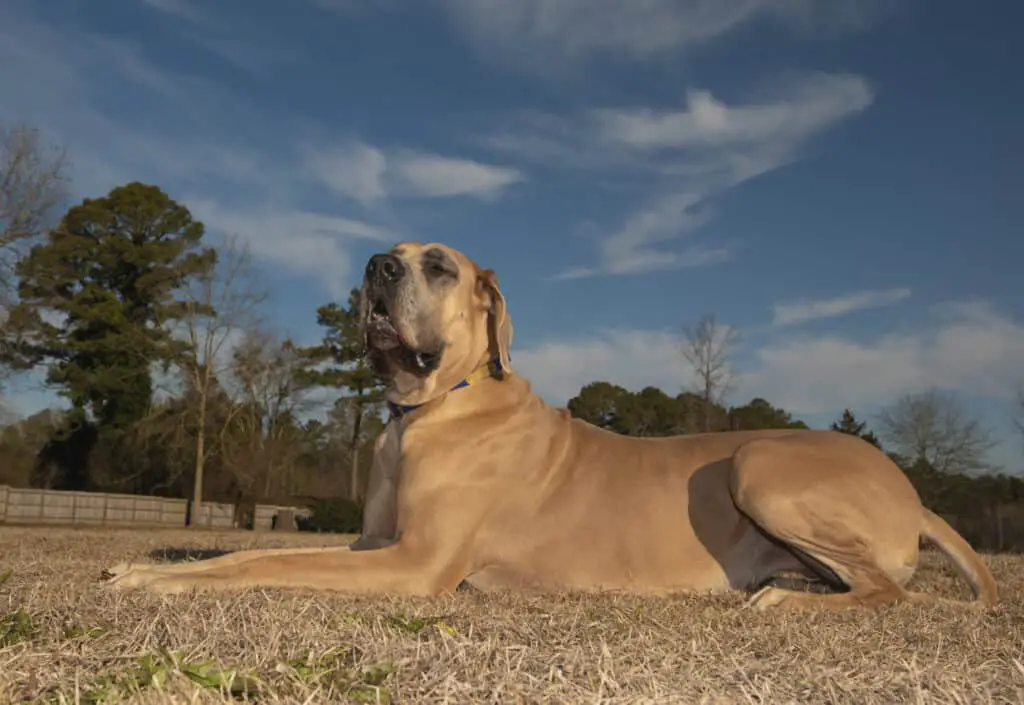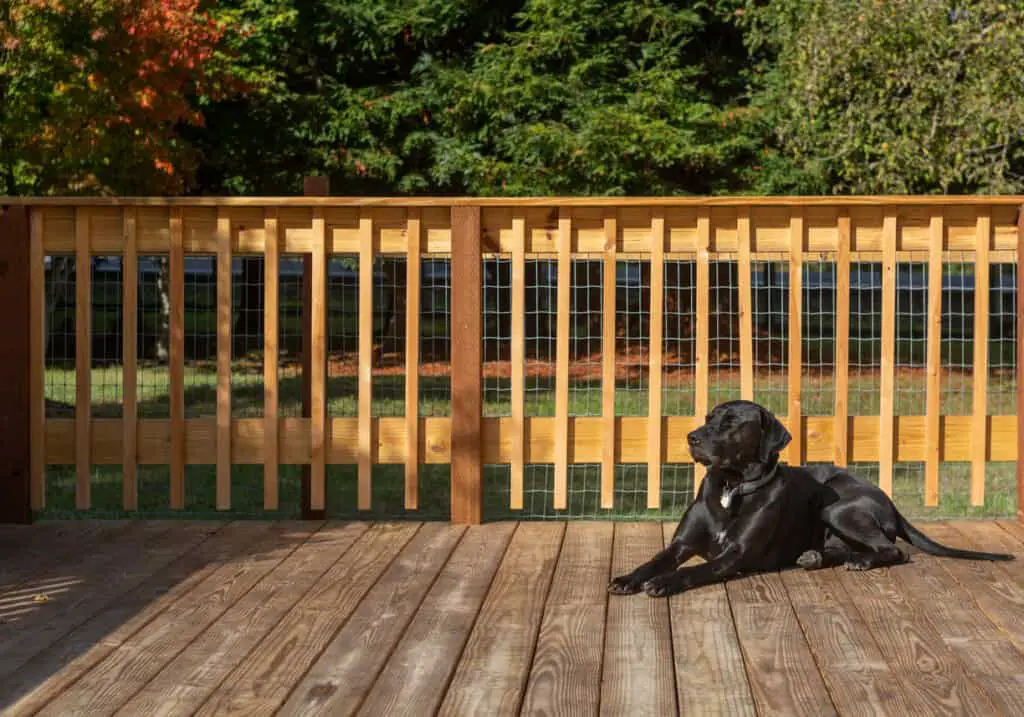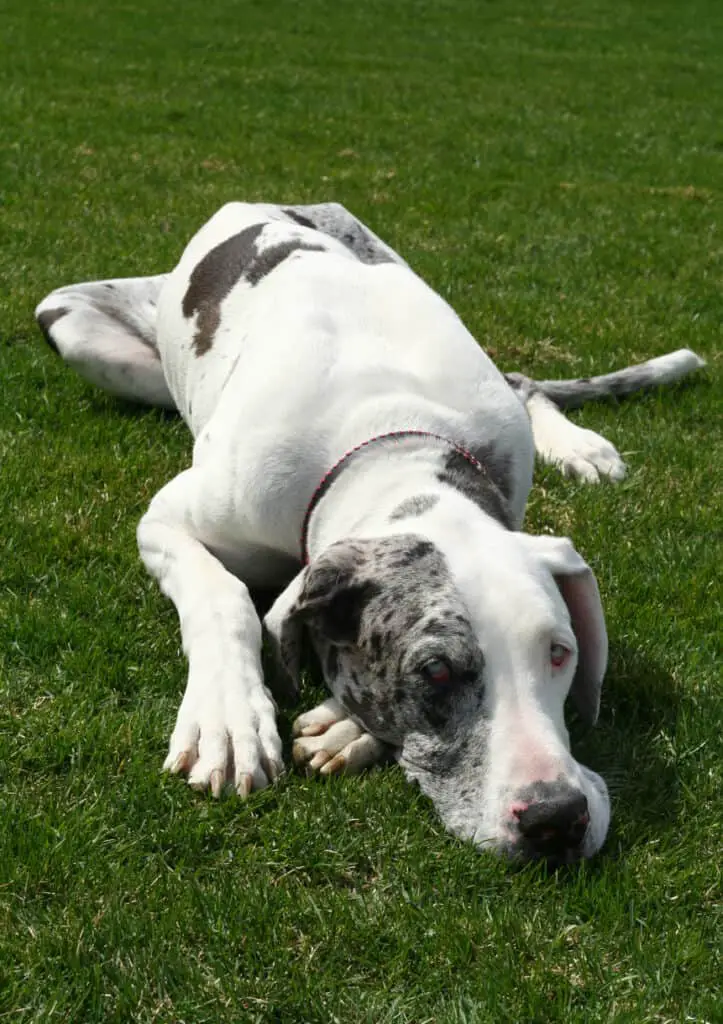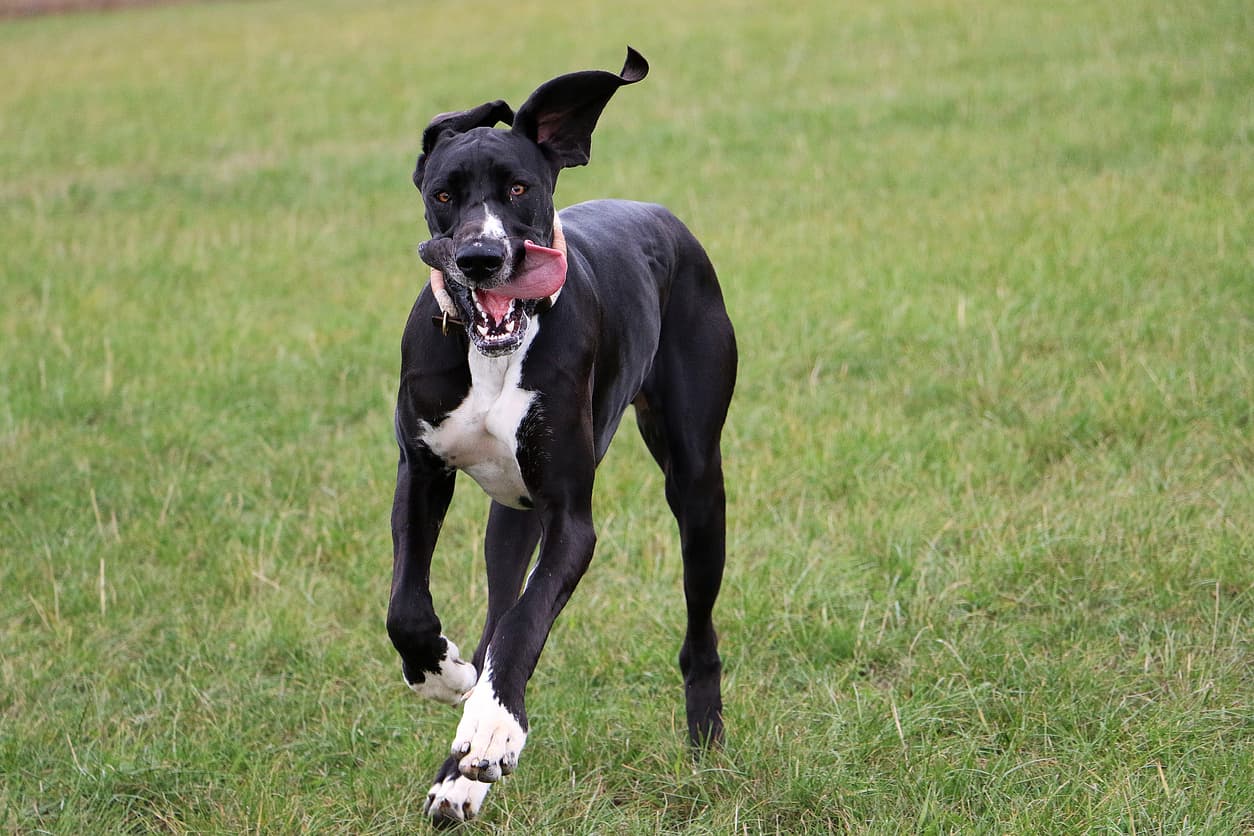Great Danes are an incredibly popular breed of giant dog. Known for their regal bearing and loving nature, they make excellent family pets and guard dogs. However, there are slight differences in the care Great Danes require depending on their sex. How to decide what sex to choose? While there are several pros and cons to consider, one major factor is the heat cycle female Great Danes experience. If you have a female Great Dane, even if you intend to spay her, she should experience at least one heat cycle prior to being altered.
What is a heat cycle?

A heat cycle is the time period when your female dog is able to become pregnant. During this time, she will become extremely receptive to mating with other dogs and will likely undergo some temporary behavioral changes.
As a giant breed, a female Great Dane will likely not experience her first heat until she is nearly one year old. Once she experiences her first heat cycle, she will undergo one every 12-18 months or so until she is spayed or dies.
Many smaller breeds experience their first heat sooner, but with Great Danes, it may take up to 24 months for their first heat cycle to occur. For early bloomers, it may be as early as six months. Like humans, every Great Dane is different.
The stages of the heat cycle
There are four stages of the reproductive cycle. Also known as oestrus, the reproductive cycle is marked by changing hormone levels.
Proestrus
The first stage is proestrus and occurs when estrogen and progesterone levels begin to rise. This signals her body to begin to prepare for a possible pregnancy. Your Great Dane may become more interested in her genital area during this time and regularly lick it.
Other physical indications that your Great Dane is entering heat include a vulva that is swollen and red, as well as bleeding. The amount of blood may be very little or a lot. It may vary in color, from a clear-ish discharge, to red, to brown.
To keep your Great Dane from unintentionally leaving bloodstains throughout your home, you can purchase reusable doggy diapers for her.
Estrus

The second state is called estrus. In this stage, the dog is referred to as “being in heat.” When a female Great Dane is in heat, the bleeding slows and stops, at which point ovulation occurs. Her body is extremely fertile, and her instinct will be to find a male dog to mate with –and any male will do. To encourage the males, she will urinate more frequently (this is known as “marking”) and produce more pheromones, which can be smelled from as much as three miles away.
She may also become quite the escape artist in her attempt to find a mate – if your fence is under six feet, she will easily jump it. If the ground is soft enough, she will dig under it. During this time, her walks and exposure to other animals will have to be carefully handled so that she does not become too much to handle, and she should not be let off leash.
Unlike females, who only become sexually activated during their estrus stage, intact males are ready and willing to mate whenever they find a female in heat. This is another consideration owners must bear in mind when their female is in heat, as intact dogs can easily mate if they encounter one another one a walk – they have even been known to successfully mate through fences.
The behavioral changes associated with female dogs being in heat are typically most prominent in this stage. For example, a female who is normally aloof may become quite cuddly. She will also likely seem more stubborn and headstrong as she seeks out a mate, but it’s important not to overcorrect her because she is simply following her instinct. Also – Great Danes are extremely sensitive, so although she may not be able to cognitively reason that you are being unfair, she will feel the inherent unfairness in being reprimanded for exhibiting behavior consistent with seeking out a mate. This is, after all, a perfectly natural impulse in unaltered animals.
Diestrus

The third state is diestrus, which is when the female dog’s body prepares for puppies even if she has not been successfully impregnated. On the inside, her uterine wall will thicken, and externally, her mammary glands will enlarge in anticipation of milk production and feeding. It is during this stage that females are at increased risk of developing pyometra.
The fourth and final stage is anestrus, which is the cycle stage your Great Dane spends the most time in. At this point, hormone levels return to normal levels and the reproductive system calms. Any behavioral changes that you’ve observed in her throughout the heat cycle will likely revert back.
Spaying your Great Dane
One of the many benefits associated with spaying your female Great Dane is that you get to avoid living with a Great Dane in heat. However, Great Danes have special health requirements associated with their growth phase as puppies that obliges owners to wait to spay their female Great Dane until after they’ve experienced their first heat cycle. More specifically, owners are obliged to wait until two months after the end of your female Great Dane’s first heat cycle before having her undergo the procedure.
The reason for the extended refrain is that a female Great Dane’s health can be compromised if she is spayed too young. Her first heat coincides with her growth phase, which is also prolonged because she is a giant breed. Thus, allowing her body to undergo the hormonal changes that come with a heat cycle ensure that her growing body is physically equipped to sustain its growth trajectory.
Additionally, the more heat stages a female Great Dane has, the higher the likelihood that she will develop a life-threatening condition called pyometra. Pyometra is a uterine infection that can develop in the weeks following the estrus phase because of the change in hormone levels her body is undergoing.
If your female Great Dane contracts pyometra, she will require a life-saving hysterectomy, which is a surgery to remove the infected uterus. Older, unaltered females are more at risk of developing this condition than younger unaltered females, and so should be monitored carefully in the weeks following their estrus stage. Unlike humans, female dogs do not experience menopause, so as long as your female Great Dane is alive and intact, pyometra will be a risk.
It’s not unusual for some female Great Danes to experience what is known as a “silent” heat. A silent heat is when a female dog goes through a heat cycle without any visible sign. This is not uncommon for a first heat cycle. Additionally, females are less likely to get pregnant during their first cycle, so many breeders wait until the second or third before attempting to mate their female with the chosen male.
If you are interested in keeping your female Great Dane intact for breeding purposes, it’s important to carefully consider the background research necessary to successfully undertake such an endeavor. Among the many wonderful characteristics the Great Dane is known for, the breed is also unfortunately riddled with health problems. Pursuing a side hobby or profession as a responsible Great Dane breeder will require that you learn about the most minute details of the breed in order to increase the likelihood of producing a healthy litter. If committing to lifelong learning about a breed does not interest you, you should probably abstain from becoming a Great Dane breeder.
If you do not intend to responsibly breed your female Great Dane, then the best course of action is to get her spayed two months after she has completed her first heat cycle. Spaying comes with a host of positive effects, such as a reduced risk of mammary cancer. It also eliminates the chance of an accidental pregnancy that results in a litter of unwanted puppies. Every year, nearly one million unwanted animals are euthanized. Getting your female Great Dane spayed ensures that you do not inadvertently contribute to this very sad problem.
In addition to eliminating the health risks associated with leaving female Great Danes unaltered, scheduling a spay procedure will open the door to a conversation with your veterinarian about a gastropexy as well. This procedure, known as “stomach tacking,” is highly recommended for breeds like the Great Dane that are at elevated risk of bloat, and are best done during the spay procedure for the purpose of reducing the amount of time the dog spends under anesthesia.
Living and caring for a female Great Dane in heat
If you have an intact female Great Dane in your care, there are several additional elements you will have to factor in when caring for her. Namely, when she in heat, you will have to help her keep her genitals as clean as possible. Many owners choose to seclude their female in a quiet, clean area of the home to keep her calm – and because it’s easier to clean a pre-determined spot than attempt to remove bloodstains off miscellaneous furniture.
You may also notice appetite changes in your female Great Dane when she is in heat. If she becomes disinterested in her usual food, you may have to tempt her into eating by providing nutritious wet food, pouring a warm, dog-safe meat-broth into the dish, or mixing in some xylitol-free peanut butter.
Living with an unaltered female Great Dane will likely make you a master at reading body language. As she cannot be allowed outside without supervision while in estrus, you, as the owner, will become privy to all her canine communications as she attempts to secure a mate. These behaviors will intensify if she so much as senses a male nearby. For example, she may lower her tail to the side, a signal known as “flagging” the male. She may emit unusual sounds, such as a low, throaty whine. If she encounters a male, she will likely become fixated, absolutely single-minded, about mating with him – and he with her.
Considering that female Great Danes on the smaller side stand 28 inches at the shoulder and weight easily over 100 pounds, the decision of whether or not to spay her is a serious one, with the more serious decision being to leave her intact. Furthermore, as a baseline, Great Danes are an exceptionally expensive breed, with the average lifetime costs of living with a Great Dane hovering around $20,000. These costs are astronomically larger for breeders due to the increased need for genetic testing and general due diligence procedures.
If you are unsure as to what is the best choice for you, consider having a discussion with your veterinarian. As an objective third party who will truly have your and the animal’s interest at the heart of their advice, your veterinarian will be able to recommend the correct course of action for you.

